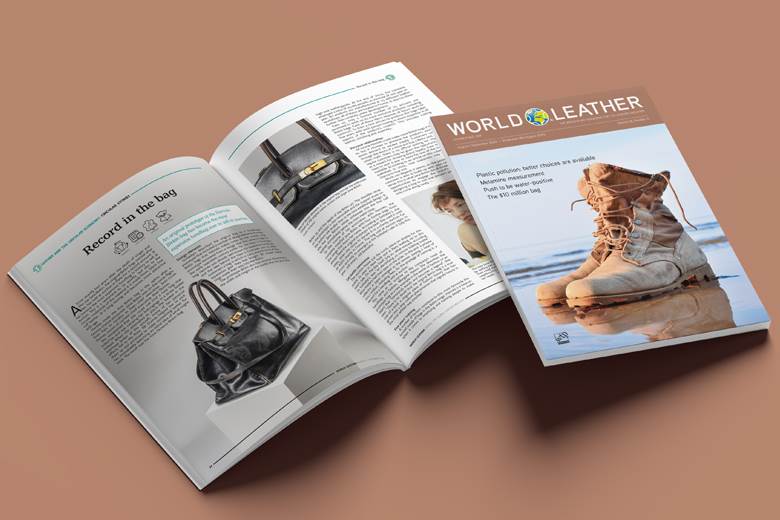World Leather August-September available now

We have a new issue of World Leather available to help colleagues everywhere prepare for the important discussions that are sure to take place at forthcoming industry events.
Our Technology section is as extensive as always, with coverage of new research from GSC on ways of reducing free monomers in retanning agents, while maintaining performance levels. We also offer a report on artificial intelligence is aiding automated trimming in the wet phase of leather production in a new system from technology provider Corium.
Five organisations in the leather value chain in Italy (Silvateam, Crossing, CRCF, Conceria Incas, and the Aquarno Consortium) have worked together to develop a new generation of natural tannins, modifying the products chemically to improve performance while reducing environmental impact. Details of this are also in the magazine, as is an account of the new tanning chemistry is making it easier for tanners and finished product manufacturers to bring to market things that are biodegradable by design.
Closing this section is an account from Stahl on the progress the industry is making in developing methods for measuring melamine content in finished leather and leather products.
This issue of World Leather covers in detail the United Nations conference that ended in Geneva on August 15 with delegates unable to agree a treaty to bring to a halt the global plastic pollution crisis.
Our hope is that the anger and disappointment many consumers and campaign groups clearly feel about plastic can be turned into a new appreciation of truly circular materials, including leather.
Other articles emphasise the value tanners and artisans are able to add to hides and skins. Large volumes of these raw materials are going to waste when, in the right hands, the value-add can exceed 5000% (this is not a misprint).
Perhaps the $10 million Hermès Birkin handbag that recently broke records at auction in Paris is an outlier in this, but is, too, features in another of the articles in this issue. We also explore the growing demand for second-hand accessories and explain why durable and lastingly beautiful leather products fit in well with this.
And don’t miss our conversation with Dr Christine Anscombe, chair of the training commission (IUT) of the International Union of Leather Technologists and Chemists Societies (IULTCS). In our Leather Leaders interview this time, she shares her vision of what leather industry education can become in the years ahead.
We hope readers enjoy every one of the articles in this issue.











